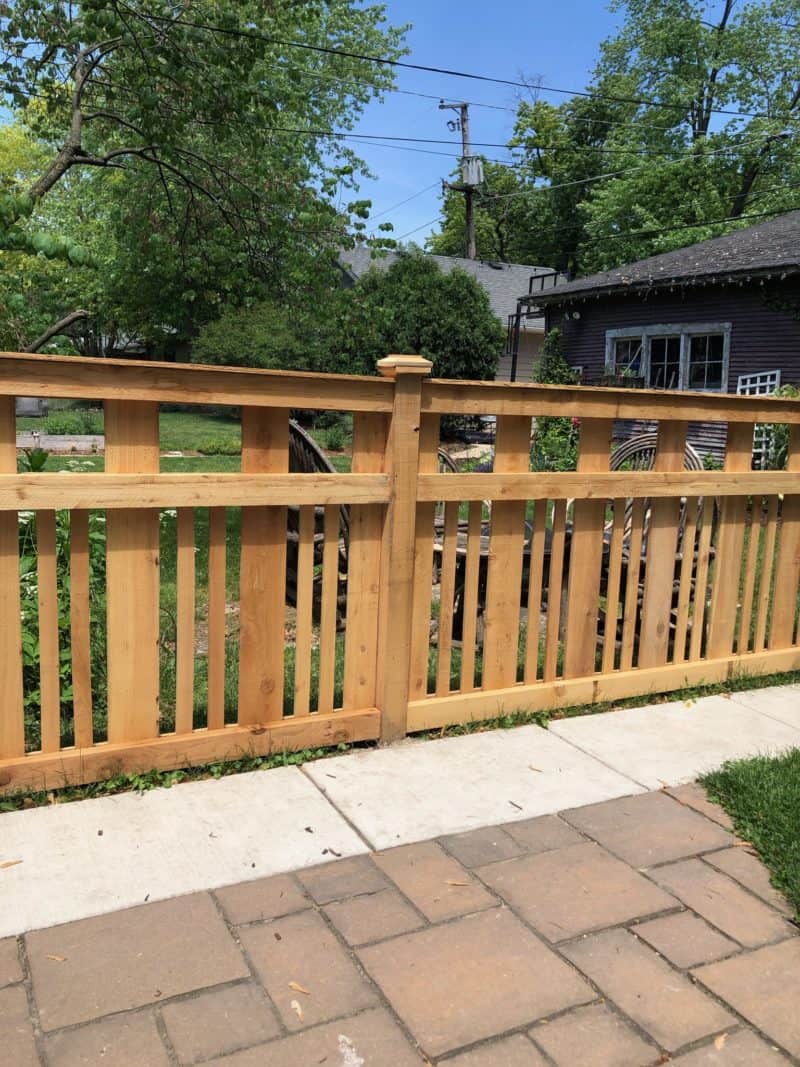Featured

Whether it's solid winds, rain, snow, or extreme heat, climate conditions can progressively compromise your fencing, leading to expensive fixings or replacement. There are a number of steps you can take to secure your fencing from weather-related damage and expand its lifespan.
- Select the Right Material. The kind of material your fence is made from plays a substantial role in how well it will stand up to climate condition. Some products are naturally extra resistant to damages than others. For instance:
Wood Fencings: While timeless and stunning, wood can be susceptible to wetness, rot, and pests. Pressure-treated timber or cedar can provide better resistance to these concerns. Vinyl Fences: Plastic is highly immune to dampness, rot, and bugs. It also stands up well to extreme sun and heavy rain. Steel Fences: Wrought iron or light weight aluminum fencings are long lasting and can stand up to a selection of climate problems. They can, nonetheless, endure from corrosion with time, specifically if not properly coated. Compound Fences: Made from a blend of timber fibers and plastic, composite fences are much more resistant to weather-related damages contrasted to typical wood fencings. Choosing the appropriate product for your region's climate is the initial step in shielding your fencing from weather damages.
- Seal or Discoloration Wooden Fences. Wood fencings are particularly susceptible to damage from wetness, UV rays, and temperature variations. One of one of the most effective ways to safeguard your timber fence is by applying a protective sealer or tarnish. These items assist:
Prevent Water Damages: Sealants create a waterproof obstacle, protecting against wetness from leaking into the timber and triggering rot, mold, or mold and mildew. Protect Against UV Damages: An excellent stain or sealer will additionally block damaging UV rays from the sun, which can cause timber to dry out, split, and blemish with time. Protect the Fence's Appearance: Normal discoloration helps preserve the natural charm of the timber and extends its life-span. It's advised to reapply the discolor or sealant every 1-- 2 years to keep your fence in excellent condition.
- Set up an Obstacle for Wind Security. Strong winds can trigger significant damages to your fencing, particularly if it is weak or tall. Wind can bend or break wood panels, loosen fence blog posts, or also create the entire fencing to collapse. Mounting a windbreak-- such as planting bushes, hedges, or mounting a mesh barrier-- can assist secure your fence from high winds.
Additionally, you can strengthen the posts with concrete or metal braces to supply additional stability and stop leaning or changing.
- Trim Overhanging Branches. Looming tree branches can posture a severe risk to your fence during tornados or high winds. Falling branches can break panels or damage the fence messages, leading to expensive repair work. Regularly cut any kind of branches that hang over your fencing, specifically if they're in close proximity to it. Maintaining the branches cut down lowers the danger of branches breaking off and triggering damage to the fencing.
- Routine Assessments and Maintenance. Performing regular upkeep and examinations is essential to capturing prospective issues prior to they intensify. After a heavy storm, examine your fence for any indications of damage, such as loosened panels, leaning messages, or broken areas. Taking treatment of little issues prior to they become larger ones can aid expand the life of your fence.
Furthermore, cleaning your fencing periodically to remove particles, dirt, or mold and mildew can help preserve its look and stability. For wooden fences, delicately stress clean the surface area to remove built-up grime, and for vinyl fencings, utilize a mild cleaning agent to cleanse any kind of discolorations.

- Make Sure Appropriate Drain. Water damage is among one of the most typical weather-related issues that affect fences. Poor drainage can bring about standing water around your fencing blog posts, which can trigger the blog posts to rot or deteriorate in time. To avoid this, ensure the ground around your fence slopes away from the blog posts. You may likewise wish to set up water drainage solutions such as French drains pipes or crushed rock at the base of the articles to stop water from merging.
- Apply a Safety Finishing to Metal Fencings. Metal fencings, such as those made of iron or steel, are very sturdy yet can be susceptible to rust if not properly preserved. Applying a safety coating or paint that is particularly created for steel can aid protect against rust and corrosion. Make certain to check the fencing occasionally for any indicators of rust, and address it quickly by fining sand and repainting the affected locations.

Verdict. Your fence is a valuable financial investment, and securing it from weather-related damages will certainly assist guarantee that it remains to serve its purpose for several years to come. By choosing the best products, routinely maintaining your fencing, and taking actions to safeguard it from the components, you can decrease weather-related damage and extend its lifespan. Whether you're dealing with solid winds, hefty rain, or the rough sun, these easy actions can go a lengthy way in maintaining the condition and look of your fencing, conserving you money and time in the long run.
Latest Posts
Learn About Best Vehicle Maintenance Care at Montclare Auto Repair – Drive with Confidence
Published en
1 min read
Explore WyHy FCU Maximizes Your Savings on Loans and Savings
Published en
1 min read
Explore Reduce Expenses on Car Maintenance with Montclare Auto Repair’s Exclusive Deals
Published en
1 min read
More
Latest Posts
Learn About Best Vehicle Maintenance Care at Montclare Auto Repair – Drive with Confidence
Published May 29, 25
1 min read
Explore WyHy FCU Maximizes Your Savings on Loans and Savings
Published May 27, 25
1 min read
Explore Reduce Expenses on Car Maintenance with Montclare Auto Repair’s Exclusive Deals
Published May 26, 25
1 min read